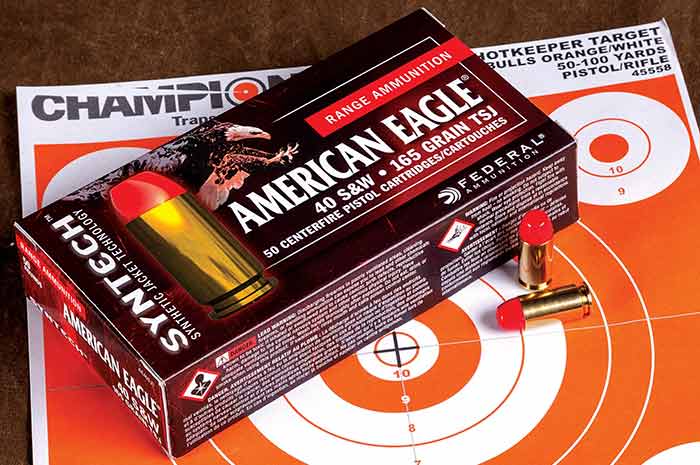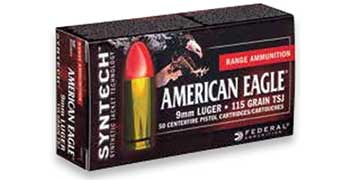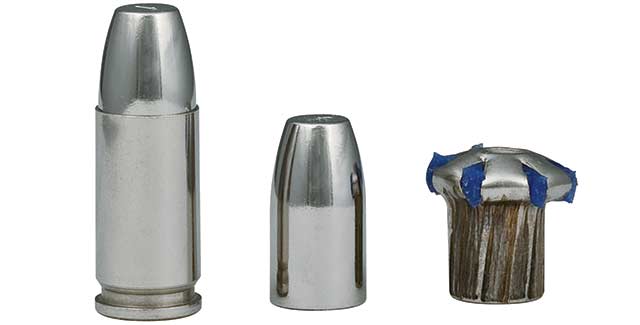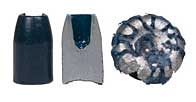
Federal Premium will introduce a new line of ammunition under its American Eagle brand at the SHOT Show. Called Syntech, the new ammunition uses a polymer jacket instead of a more traditional copper one.
The new ammo will be offered in three handgun calibers at launch: 9mm, .40 S&W and .45 ACP. Bullet weights will be typical for the caliber: 115 grains for the 9mm, 165 grains for the .40 and 230 grains for the .45.
Using a polymer jacket has a number of potential advantages for the company and the shooter. First, Federal may be able to manufacture these bullets for less money than if the company used a traditional copper jacket. This can work out to be lower prices for the consumer.
Secondly, by using a polymer jacket, there can be less fouling of the bore. Plain lead bullets can leave quite a bit of residue behind that is tough to scrub out. Copper jackets reduce the fouling, but copper is still tough to remove from a bore. Any polymer left behind is likely to be easier to remove from the pistol’s barrel.
Another potential benefit of using a polymer jacket is a reduction in “splash back” when shooting steel. Shooting steel targets is both fun and useful as a training tool. However, one of the risks involved bullet shrapnel bouncing back at the shooter. Even when operating at supposedly safe distances, I’ve seen part of a copper jacket come back and strike a shooter just above the eye. In theory, a polymer jacket will not rebound off of steel in the same way that copper would.
American Eagle Syntech ammunition is not the first time the company has used a polymer jacket. Federal used a polymer jacket on its popular Nyclad line of ammo many moons ago, and still does on the modern Nyclad .38 Special rounds.
For these loads, Federal used a soft lead alloy that would readily expand at even low velocities. However, copper jackets would inhibit expansion, and bare lead would leave a lot of gunk behind in the gun. To solve the problem, a polymer jacket was developed.
While the Nyclad line was eclipsed by other defensive ammunition lines, I am not familiar with any problems with the ammo caused by the polymer jacket.
I do not have any word on pricing yet for these rounds. As I get additional information leading into the SHOT Show, I will update this article.






 The Nyclad line of ammunition was developed several decades ago and became popular as one of Federal’s self-defense lines of cartridges. The .38 Special self-defense load was a 125 grain, standard pressure round that featured a soft-lead bullet with a very deep hollow point. The bullet was coated in a jacket of polymer, similar to nylon, that allowed the bullet to reliably expand all even low velocities.
The Nyclad line of ammunition was developed several decades ago and became popular as one of Federal’s self-defense lines of cartridges. The .38 Special self-defense load was a 125 grain, standard pressure round that featured a soft-lead bullet with a very deep hollow point. The bullet was coated in a jacket of polymer, similar to nylon, that allowed the bullet to reliably expand all even low velocities.